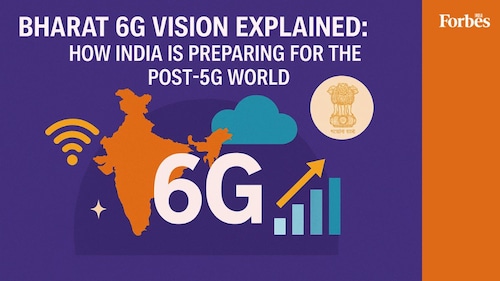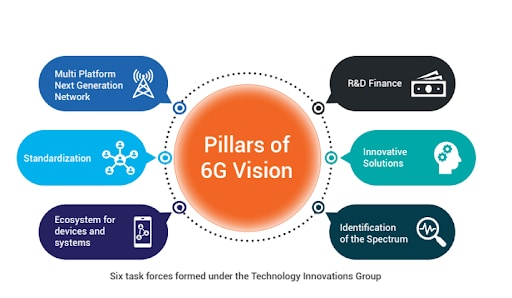Bharat 6G Vision explained: How India is preparing for the post-5G world
Learn about Bharat 6G Vision and how India plans to shape the future of connectivity through innovation, strategy, and global collaboration


Stable internet connectivity is the backbone of digital progress in every sector. As more Indians come online each year, the demand for a more reliable and faster network is increasing.
As of early 2025, DataReportal reported 1.12 billion active mobile connections in India, equivalent to 76.6 percent of its population. While not all of these are internet-enabled, the online penetration was estimated to be around 806 million users. The Internet and Mobile Association of India (IAMAI) expects this internet user base to cross 900 million by the end of 2025, thanks to the growing consumption of content in regional languages.
India is already looking beyond 5G. The conversation has shifted to the 6G network - its possibilities, research priorities, and national objectives.
In this post, we’ll explore how India is shaping the future of connectivity with Bharat 6G Vision, its key objectives, the strategies in place, and the challenges to tackle along the way.
The Bharat 6G Vision is India’s roadmap to lead the global shift toward the next generation of wireless communication. The initiative, released by the Government of India, focuses on positioning the country as a key supplier of intellectual property and affordable 6G network solutions.
The plan goes beyond infrastructure it’s about building an ecosystem that includes academic research, industry collaboration, local manufacturing, and participation in international standard-setting.
 Source | The six core pillars of Bharat 6G Vision
Source | The six core pillars of Bharat 6G Vision
Bharat 6G Vision has several strategic pillars focusing on innovation in areas like AI-driven air interfaces, dense optical networks, supporting early-stage research and development, and encouraging Indian startups to create impactful telecom solutions. The mission also emphasises the importance of security, standardisation, resources, and interoperability.
The Bharat 6G Vision sets clear targets for positioning 6G in India as a globally competitive force. Its top objectives are enabling India to develop and supply affordable 6G products, which will enhance IP creation, support homegrown research, and ensure strong participation in international telecom standards. The goal is to make the 6G network a foundation for high-speed, intelligent, and secure digital services.
The global commercial deployment is expected to begin in 2030. While 6G in India is still in its research phase, the country aims to align its efforts with this timeline. Focus areas for research and development include AI-driven networks, LEO satellite constellations, intelligent edge computing, and immersive tech like virtual reality (VR) and augmented reality (AR) - all vital to shaping the future of connectivity.
The phased approach gives 6G in India a structured timeline to transition from theory to deployment. It keeps the larger goal of a resilient 6G network in sync with the national vision of Atmanirbhar (self-reliant) Bharat.
Phase 1 (2023 to 2025): This phase is centred on ideation and early experimentation. Proof-of-concept trials, initial research, and exploration of high risks are all encouraged to understand what could work at scale.
Phase 2 (2025 to 2030): This phase moves the spotlight to development and deployment. Promising concepts from the initial stage are expected to be executed into actual tech solutions. These include IP generation, testbed creation, and the development of commercial-grade prototypes that can serve both domestic and international needs.
Here’s how the government is supporting the growth of 6G in India:
While the Bharat 6G Vision presents a strong blueprint, several challenges need to be addressed:
First Published: Aug 05, 2025, 16:48
Subscribe Now